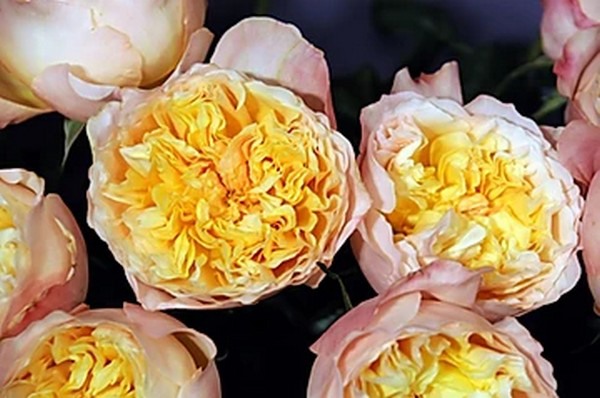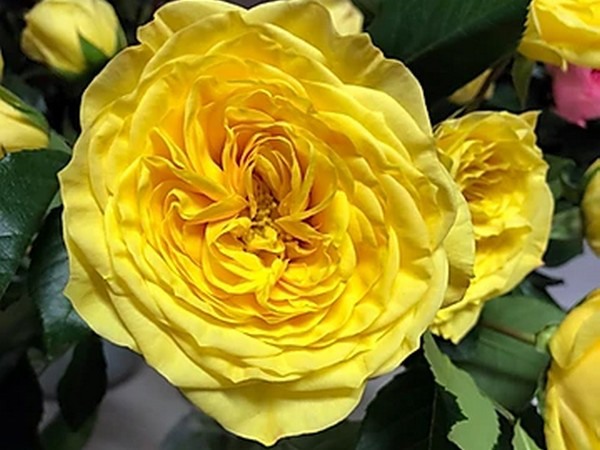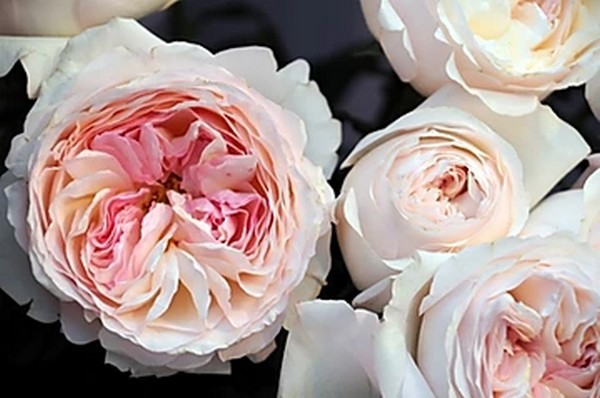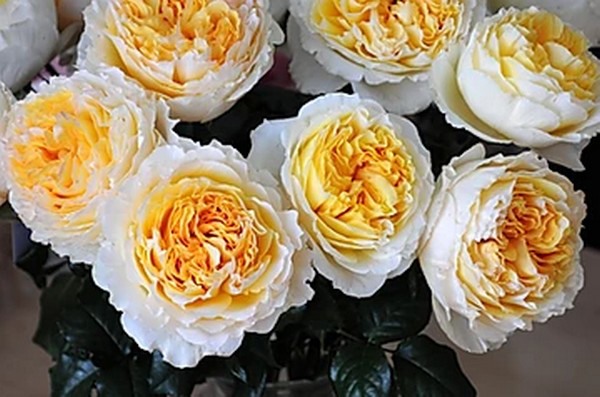If you’re already a fan of fragrant roses, maybe you’ve noticed that rose scent varies widely—in intensity, from subtle to intoxicating, and in character, over a range of distinctly identifiable fragrance categories, from the sweet and fruity Edith (Auspluto) to the classic rose scent of Lemon Pompon.

Edith (Auspluto)
Anyone can enjoy fragrance without going further than plunging your nose into the rose petals and deeply inhaling. But just as wine lovers may acquire a discriminating palate, yielding a more sophisticated pleasure, rose lovers can with just a little effort distinguish among the classic families of rose scent. And what a pleasant lesson to learn!

Lemon Pompon
Floral scents, like other odors, may be classified by the chemical structure of their associated aroma compounds—lightweight molecules that float from the petals to our noses. Subjectively, that structure translates into a sensation that our brains interpret as, for example, fruity, woody, spicy or herbal.
The scent of any particular rose will be highly complex. Scientists have identified about 1,000 different aroma compounds produced by plants. More than 80 of these are found in roses of various kinds.

Keira (Ausboxer)
Rosarians classify rose scent into as many as seven categories. One of these is called simply rose, or damask. Others include peppery nasturtium, violets, orris (named after a warm, sweet fragrance oil made from irises), apple, clove and lemon.
Within these categories come fruity notes like raspberry, apricot, melon and banana, or spicy scents like nutmeg. Myrrh is a classic scent, reminiscent of anise, found especially in some pink and apricot David Austin varieties, such as Beatrice (Auslevity), Edith (Auspluto) and Keira (Ausboxer).

Beatrice (Auslevity)
But in the end, each rose variety’s scent is unique. It may even smell different over the rose’s lifetime, at different times of day, or to different people, equipped with different noses. The best way to learn more? Take time to smell the roses.

 Alexandra Farms
Alexandra Farms